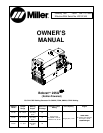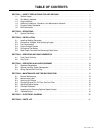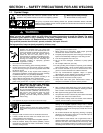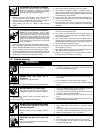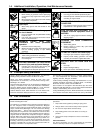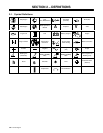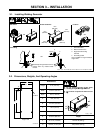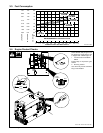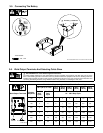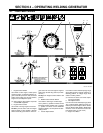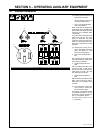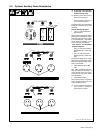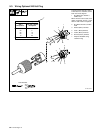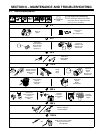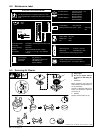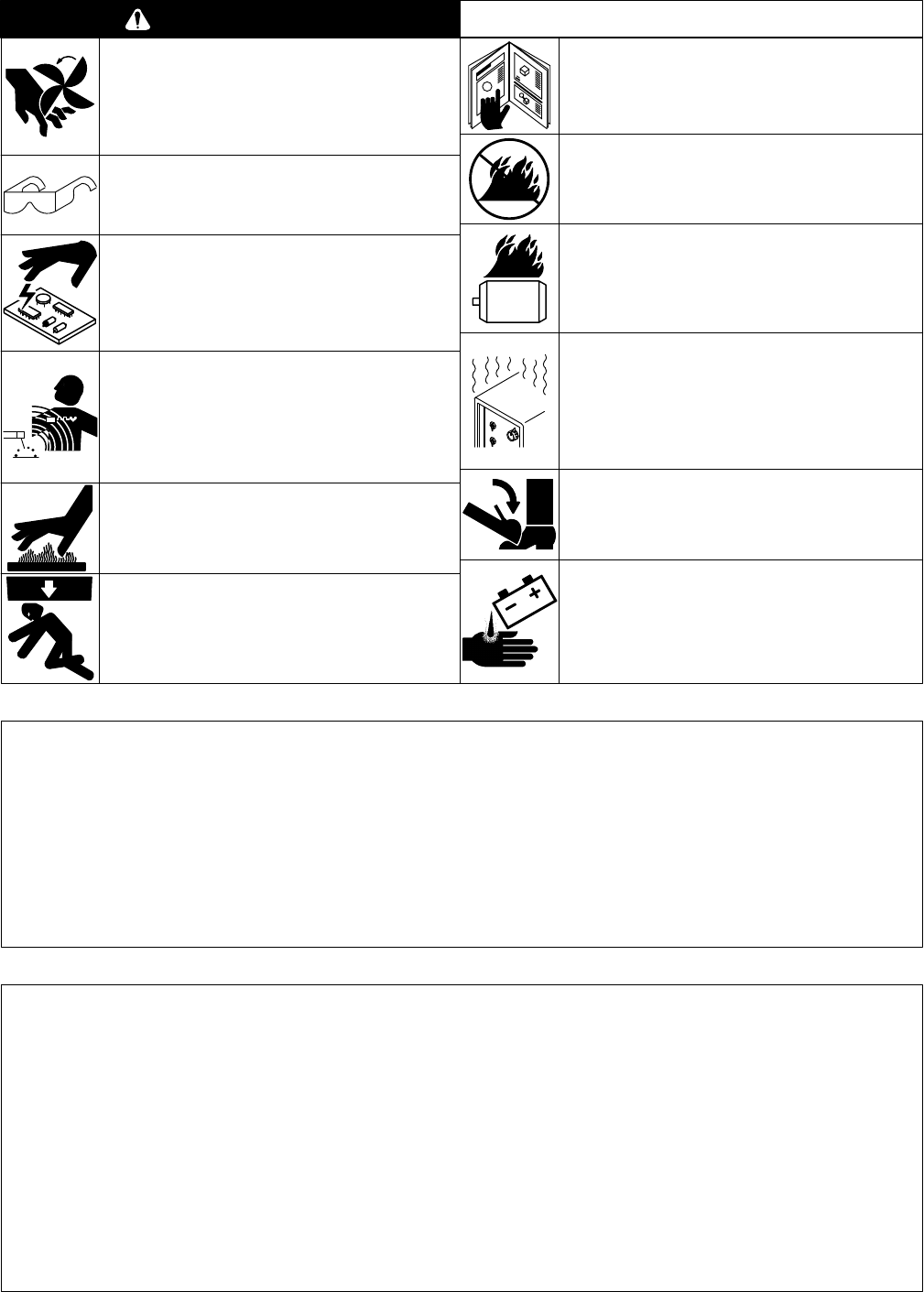
OM-175 104 Page 3
1-4. Additional Installation, Operation, And Maintenance Hazards
MOVING PARTS can cause injury.
1. Before
working
of generator
, remove spark plugs
or injectors to keep engine from kicking back or
starting.
2. Block
flywheel so that it will not
turn while working
on
generator components.
FLYING PIECES OF METAL or DIRT can
injure eyes.
1. Wear safety glasses with side shields or face
shield.
STATIC ELECTRICITY can damage parts
on circuit boards.
1. Put on grounded wrist strap BEFORE handling
boards
or parts.
2. Use proper static-proof bags and boxes to store,
move,
or ship PC boards.
MAGNETIC FIELDS FROM HIGH
CURRENTS can affect pacemaker
operation.
1. Pacemaker wearers keep away.
2. W
earers should consult their doctor before going
near arc welding, gouging, or spot welding
operations.
HOT PARTS can cause severe burns.
1. .Allow
cooling period before maintaining.
2. Wear
protective gloves and clothing when working
on
a hot engine.
FALLING EQUIPMENT can cause serious
personal injury and equipment damage.
1. Use lifting eye to lift unit only, NOT running gear,
gas cylinders, or any other accessories.
2.
Use equipment of adequate capacity to lift unit.
READ INSTRUCTIONS.
1. Use
only genuine MILLER replacement parts.
2. Reinstall injectors and bleed air from fuel system
according to engine manual.
DO NOT LET ENGINE EXHAUST SPARKS
CAUSE FIRE.
1. Use approved engine exhaust spark arrestor in
required
areas – see applicable codes.
LOW VOLTAGE AND FREQUENCY CAN
DAMAGE electrical equipment such as
MOTORS.
1. Turn off or unplug equipment before starting or
stopping
engine.
OVERUSE can cause OVERHEATED
EQUIPMENT.
1. Allow
cooling period.
2. Reduce current or reduce duty cycle before
starting
to weld again.
3.
Follow rated duty cycle.
TILTING OF TRAILER can cause injury.
1. Use
tongue jack or blocks to support weight.
2. Properly install welding generator onto trailer
according
to instructions supplied with trailer
.
BATTERY ACID can BURN SKIN AND
EYES.
1. Do
not tip.
2.
Replace damaged battery
.
3.
Flush eyes and skin immediately with water
.
WARNING
1-5. Principal Safety Standards
Safety
in W
elding and Cutting
, ANSI Standard
Z49.1, from American
Welding Society, 550 N.W. LeJeune Rd, Miami FL 33126
Safety and Health Standards
, OSHA 29 CFR 1910, from
Superintendent of Documents, U.S. Government Printing Office,
Washington, D.C. 20402.
Recommended Safe Practices for the Preparation for Welding and
Cutting of Containers That Have Held Hazardous Substances
,
American Welding Society Standard AWS F4.1, from American
Welding Society, 550 N.W. LeJeune Rd, Miami, FL 33126
National Electrical Code
, NFPA Standard 70, from National Fire
Protection Association, Batterymarch Park, Quincy, MA 02269.
Safe Handling of Compressed Gases in Cylinders
, CGA Pamphlet
P-1, from Compressed Gas Association, 1235 Jefferson Davis
Highway, Suite 501, Arlington, VA 22202.
Code
for Safety in W
elding and
Cutting
, CSA Standard W1
17.2, from
Canadian Standards Association, Standards Sales, 178 Rexdale
Boulevard, Rexdale, Ontario, Canada M9W 1R3.
S
afe Practices For Occupation And Educational Eye And Face
Protection
,
ANSI Standard Z87.1, from American National Standards
Institute, 1430 Broadway, New York, NY 10018.
Cutting
And
W
elding Processes
, NFP
A Standard 51B, from National
Fire Protection Association, Batterymarch Park, Quincy, MA 02269.
1-6. EMF Information
Considerations About Welding And The Effects Of Low Frequency
Electric And Magnetic Fields
The
following
is a quotation from the General Conclusions Section of
the U.S. Congress, Office of Technology Assessment,
Biological
Effects
of Power Frequency Electric & Magnetic Fields – Background
Paper
, OTA-BP-E-53 (Washington, DC: U.S. Government Printing
Office,
May 1989): “. . . there is now a
very large volume of scientific
findings
based on experiments at the cellular level and from studies
with animals and people which clearly establish that low frequency
magnetic
fields can
interact with, and produce changes in, biological
systems.
While most of this work is of very high quality
, the results are
complex. Current scientific understanding does not yet allow us to
interpret the evidence in a single coherent framework. Even more
frustrating,
it does not yet allow us to draw definite conclusions about
questions of possible risk or to offer clear science-based advice on
strategies to minimize or avoid potential risks.”
To reduce magnetic fields in the workplace, use the following
procedures:
1. Keep cables close together by twisting or taping them.
2. Arrange cables to one side and away from the operator.
3. Do not coil or drape cables around the body.
4. Keep welding power source and cables as far away as
practical.
5. Connect work clamp to workpiece as close to the weld as
possible.
About Pacemakers:
The above procedures are also recommended for pacemaker
wearers. Consult your doctor for complete information.



